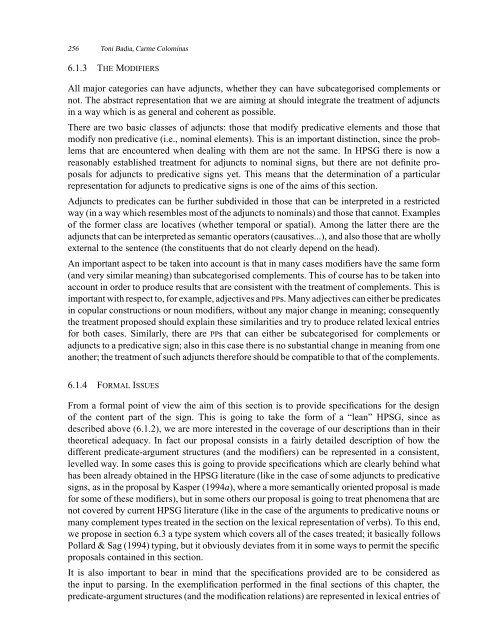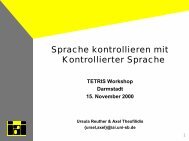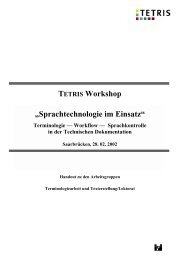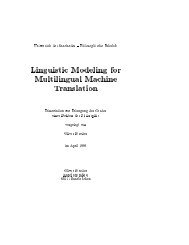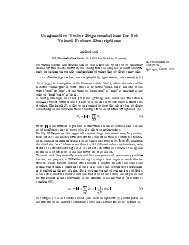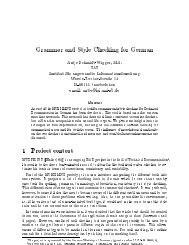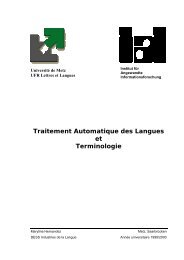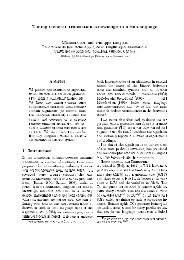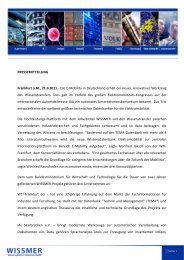Predicate-Argument Structure
Predicate-Argument Structure
Predicate-Argument Structure
You also want an ePaper? Increase the reach of your titles
YUMPU automatically turns print PDFs into web optimized ePapers that Google loves.
256 Toni Badia, Carme Colominas<br />
6.1.3 THE MODIFIERS<br />
All major categories can have adjuncts, whether they can have subcategorised complements or<br />
not. The abstract representation that we are aiming at should integrate the treatment of adjuncts<br />
in a way which is as general and coherent as possible.<br />
There are two basic classes of adjuncts: those that modify predicative elements and those that<br />
modify non predicative (i.e., nominal elements). This is an important distinction, since the problems<br />
that are encountered when dealing with them are not the same. In HPSG there is now a<br />
reasonably established treatment for adjuncts to nominal signs, but there are not definite proposals<br />
for adjuncts to predicative signs yet. This means that the determination of a particular<br />
representation for adjuncts to predicative signs is one of the aims of this section.<br />
Adjuncts to predicates can be further subdivided in those that can be interpreted in a restricted<br />
way (in a way which resembles most of the adjuncts to nominals) and those that cannot. Examples<br />
of the former class are locatives (whether temporal or spatial). Among the latter there are the<br />
adjuncts that can be interpreted as semantic operators (causatives...), and also those that are wholly<br />
external to the sentence (the constituents that do not clearly depend on the head).<br />
An important aspect to be taken into account is that in many cases modifiers have the same form<br />
(and very similar meaning) than subcategorised complements. This of course has to be taken into<br />
account in order to produce results that are consistent with the treatment of complements. This is<br />
important with respect to, for example, adjectives and PPs. Many adjectives can either be predicates<br />
in copular constructions or noun modifiers, without any major change in meaning; consequently<br />
the treatment proposed should explain these similarities and try to produce related lexical entries<br />
for both cases. Similarly, there are PPs that can either be subcategorised for complements or<br />
adjuncts to a predicative sign; also in this case there is no substantial change in meaning from one<br />
another; the treatment of such adjuncts therefore should be compatible to that of the complements.<br />
6.1.4 FORMAL ISSUES<br />
From a formal point of view the aim of this section is to provide specifications for the design<br />
of the content part of the sign. This is going to take the form of a “lean” HPSG, since as<br />
described above (6.1.2), we are more interested in the coverage of our descriptions than in their<br />
theoretical adequacy. In fact our proposal consists in a fairly detailed description of how the<br />
different predicate-argument structures (and the modifiers) can be represented in a consistent,<br />
levelled way. In some cases this is going to provide specifications which are clearly behind what<br />
has been already obtained in the HPSG literature (like in the case of some adjuncts to predicative<br />
signs, as in the proposal by Kasper (1994a), where a more semantically oriented proposal is made<br />
for some of these modifiers), but in some others our proposal is going to treat phenomena that are<br />
not covered by current HPSG literature (like in the case of the arguments to predicative nouns or<br />
many complement types treated in the section on the lexical representation of verbs). To this end,<br />
we propose in section 6.3 a type system which covers all of the cases treated; it basically follows<br />
Pollard & Sag (1994) typing, but it obviously deviates from it in some ways to permit the specific<br />
proposals contained in this section.<br />
It is also important to bear in mind that the specifications provided are to be considered as<br />
the input to parsing. In the exemplification performed in the final sections of this chapter, the<br />
predicate-argument structures (and the modification relations) are represented in lexical entries of


